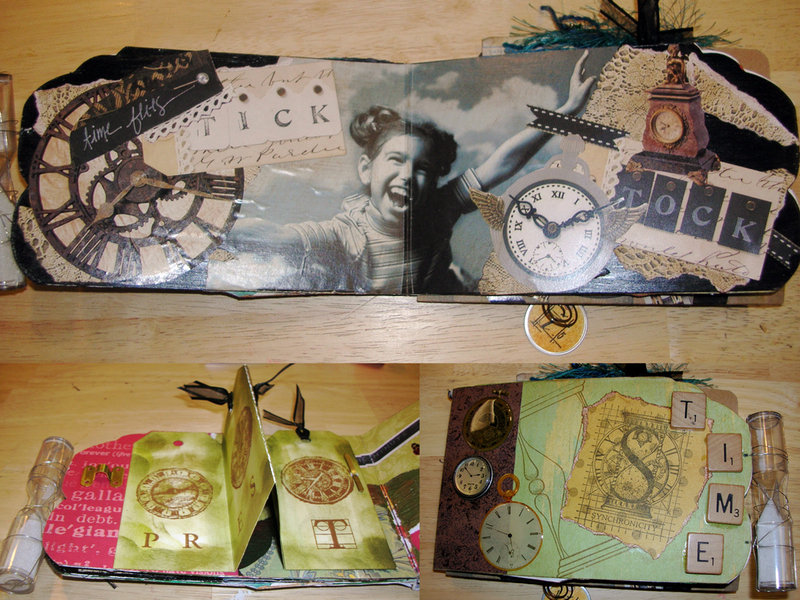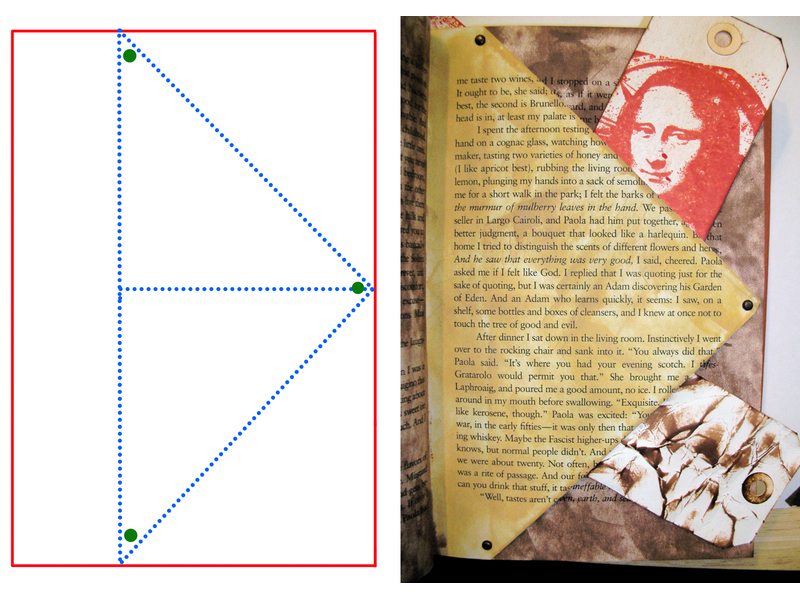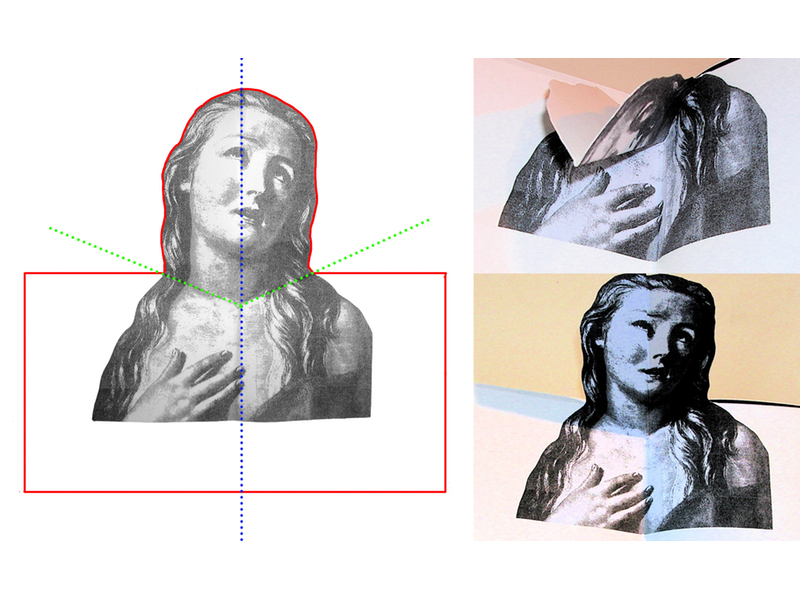First, choose a book to use as your “blank canvas.” Hardcover books work better than paperbacks because they have the strength to support the weight of embellishments and to sustain the abuse you’ll be inflicting on them.
As tempting and obvious a choice as a children’s board book is, using one will require a lot more work. Because glues don’t adhere well to the glossy pages, you’ll need to sand off the plastic coating from all of the pages and prime them with gesso before getting to work.
Before settling on a book, bend back the corners of a few pages. Make sure they don’t crack; cracking is a sure sign they won’t sustain the altering process.
With these practical concerns in mind, choose a book that interests you, since you’ll be living with it for a while. You can choose a book based on its design or aesthetics alone, or according to a contextual theme you intend to work with throughout the book. Of course, if you intend to completely cover or mutilate the book, the content won’t make much difference. In this case, you should perhaps choose based on durability alone.
Book in hand, now make room for the embellishments you’re going to add. Go through the entire book, removing pages periodically (pulling firmly, right up against the spine) in groups of 2 or 3. You’ll need to tear out more as you go, but it’s best to get rid of a bunch of pages at the beginning (plus, emotionally, I’ve found this to be the most difficult part of beginning, once you’ve ripped out a few pages, altering the rest of the book becomes much easier).
Finally, choose your first spread (altering facing pages as a single unit creates a unified aesthetic) and glue a couple of pages together (more for heavier embellishments) on either side. As you alter the rest of the book, you’ll need to do this for every spread you work on, to reinforce the surface and support the weight of the embellishments you add.










